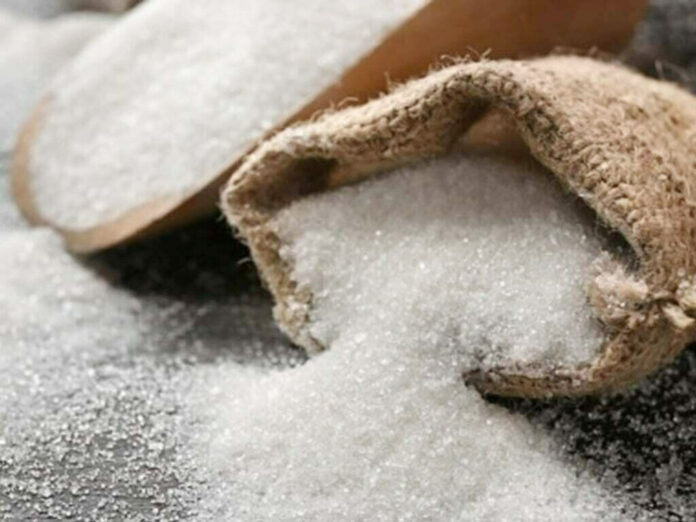By Tauheed A Khan
The Federal Government is expected to approve the export of 40,000 metric tons of sugar to Tajikistan. Media reports indicate the government-to-government agreement stipulates a heavily discounted sale price in the range of Rs. 133-136 per kg and includes a possible waiver of fees at Karachi Port. While this will bolster export numbers, the reality is that both high volume sugar exports and attendant export subsidies are an inefficient deployment of national resources.
What is the scale of the problem?: Earlier this year, the Pakistan Sugar Mills Association (PSMA) requested the Government of Pakistan to institute a permanent channel allowing for the export of a million tons a year. The government responded by conditionally allowing the export of 150,000 metric tons.
In view of the above, it is clear that while export of sugarcane products will yield some economic benefit in the immediate term, the long term cost is simply not viable. Only if decision making bodies in the country start planning strategically and holistically now, can we hope for a future that is stable, sustainable, productive and profitable
Sugarcane cultivation and sugar manufacturing in Pakistan has increased significantly over the past few years. This increase has principally been driven by considerable subsidies provided by the Federal Government. These subsidies include a notable Rs 3 billion in an attempt to increase sugar exports; helping the industry bridge a gap between national and international sugar prices. The exports however have proven counterproductive. They have resulted in local sugar shortages leading to a sharp increase in domestic prices. In 2017 for example, the Economic Coordination Committee (ECC) provided the sugar industry a whopping Rs 10.7 billion subsidy, leading to the export of 1.5 million tons of sugar. While the subsidy was intended to increase exports, it ultimately led to market imbalances, including but not limited to sharp price hikes. Government support for sugarcane production and manufacturing has placed a heavy burden on Pakistan, leading to market disruptions, domestic shortages, and escalating domestic prices. All combined, these conditions constitute a negative impact on local consumers and the national economy.
What is the cost/benefit analysis?: In Pakistan, sugar cane as an agricultural crop is largely unproductive in terms of its yield/hectare. Though there are many intensive resources devoted to the crop’s agricultural production, the yields are considerably lower than other agricultural crops that could be harvested on the same land (like wheat, cotton, maize, rice, among others). In fact, despite being the fifth largest country in the world in terms of sugarcane cultivation, Pakistan ranks 60th in sugarcane yield – highlighting the country’s unproductivity. Even more disconcerting is sugarcane’s intensive dependence on critical water resources.
Sugarcane is a water-reliant crop requiring considerable quantities for production. For instance, producing just one kilogramme of sugar from sugarcane can on average require up to 1,500-3,000 litres of water. As Pakistan is a water-scarce country facing diminishing groundwater reserves, devoting its already depleted groundwater reserves to an unproductive crop is detrimental for the country. The increased production of sugarcane in Pakistan is greatly accelerating the depletion of Pakistan’s already scarce and fast diminishing groundwater reserves, especially in areas like Rahim Yar Khan (Punjab), and Mirpurkhas (Sindh), where sugar-cane production is extensive.
What are the wider agricultural implications?: Sugarcane cultivation and production does not only have implications for Pakistan’s water reserves, but also for the country’s large-scale agricultural sector. Increased focus on sugarcane production often redirects agricultural inputs from productive crops. An example of this can be seen in cotton– a crop that has consistently been economically viable for Pakistan and far less water dependent than sugarcane. However, despite its productive advantages, cotton production in Pakistan has witnessed deficient growth in the past few years.
Cotton is one of Pakistan’s most prominent agricultural domains, contributing a meaningful 0.8 percent to Pakistan’s GDP, and a significant 5.2 percent to the country’s agricultural value. Additionally, the crop contributes a whopping 51 percent to Pakistan’s foreign exchange revenues– far more than any other agricultural product. However despite these benefits, the industry has struggled over the past few years.
One of the main reasons is limited water resources. This fiscal year, a report by the Indus River System Authority (IRSA) projected a 35 percent decrease in water resources. This led to a 20 percent reduction in targeted cotton cultivation (from 5 million to 4 million acres of land). Areas previously allocated for cotton production are swiftly being replaced by sugarcane. In short, subsidies and export facilitation of sugar has effectively undercut the productive development of other agricultural crops. Today, Pakistan only produces 8-9 million bales of cotton approximately– an alarming 39.33 percent decrease from 14 million bales in 2014.
What can be done instead?: Considering all of these aspects, it is clear that the Government of Pakistan needs to reevaluate its agricultural objectives. Though export of sugar might provide short term monetary gains, the long term repercussions of this approach are detrimental. Pakistan’s national interest is in reallocating agricultural resources from sugarcane and sugar production towards crops like cotton which provide greater productivity, water efficiency, and economic viability. In fact, sugarcane and sugar production needs to be regulated to only meet domestic demand. Surplus sugarcane and sugar production is neither viable nor sustainable for Pakistan’s agricultural resources.
Pakistan has a lot to learn from other countries. Australia for instance deregulated its sugar industry in 2006. Prior to this Australia’s sugar industry was strictly regulated, limiting its international competitiveness in the international markets. However in 2006, when Australia’s sugar sector deregulated, it moved towards a commercial marketing model. This drove innovation within the industry, allowing it to compete in international markets, ultimately making it the world’s 4th largest exporter of sugar. It now exports roughly 3-4 million tonnes of sugar annually, worth a significant $1.5 billion – $2.5 billion. By instituting similar policies for its own sugar and agricultural industry, Pakistan could increase innovation within its sugar sector, increase competitiveness, foster environmentally viable agricultural processes, and secure the effective utilization of crucial resources, such as water.
In view of the above, it is clear that while export of sugarcane products will yield some economic benefit in the immediate term, the long term cost is simply not viable. Only if decision making bodies in the country start planning strategically and holistically now, can we hope for a future that is stable, sustainable, productive and profitable.
The writer is a student of entrepreneurship in emerging markets. His specific area of interest is in the growth trend of public listed corporations in Pakistan.























